Published by the La Vernia News on April 18, 2013.
Everyday Journeys
Harry and Linda Kaye Perez
Looking for a wonderful way to spend a sunny, spring day filled with beauty, inspiration and history? Twenty-five miles from LaVernia, just off South Presa Street at the Old Berg’s Mill crossing on the east bank of the San Antonio River, is Mission San Juan Capistrano.
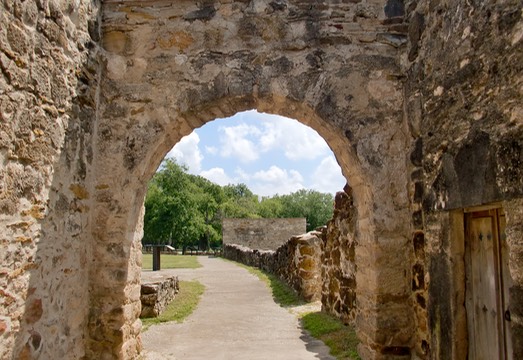
On Tuesday, February 26th, Mission San Juan reopened its doors to the public after a year and a half-long restoration costing $2.2 million to preserve this San Antonio treasure. The most important issue to be resolved was the stabilization of the foundation to prevent the walls and roof from further damage. This was done by placing 32 piers that extend 29 feet below ground level. Deteriorated parts of the iconic bell tower were replaced with new stonework. The buttresses that were added in the 1970s to shore up failing walls were removed, and the outside received a new coat of white plaster, restoring the exterior to its original design concept. The interior also received a fresh new look, along with new mechanical and lighting systems.
During the foundation work, the skeletal remains of 15 indigenous people, including children and young adults, were discovered, buried four to six feet deep along the walls on each side of the main door. Archeologists were called in to excavate and analyze these remains. They were then stored at San Juan and were recently reinterred on the Mission grounds alongside remains of more than 100 others reinterred there in 1999. Father David Garcia, Director of Old Spanish Missions, said that a Catholic Mass was offered, along with Native American funeral rituals performed by members of the Tap Pilman Coahuiltecan Nation.
FROM THE PAST
Founded by Spanish Catholics of the Franciscan Order in the 1700s, the Mission became a self-sustaining community, producing fruits, vegetables, sugar cane, as well as iron tools and cloth made by Indian artisans. By 1762 there were also large herds of cattle, sheep, goats and horses. San Juan and its four sister missions in San Antonio were all built near a vital resource, the San Antonio River.
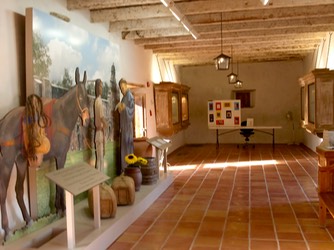
Mission San Juan, like the other missions in the area, began to decline after secularization in 1794. In the early 1800s, the roof and one wall of San Juan completely collapsed and the building remained in this condition for over thirty years. In 1840 religious services were once again conducted and San Juan made a slow, but steady, climb to its restored condition. It has been an active parish church since 1909.
In 1978 San Juan and other missions along the San Antonio River became part of the San Antonio National Historical Park and in 1982 a legal opinion by the U.S. Department of Justice allowed the National Park Service to manage the parks, and the Archdiocese of San Antonio to use the missions as churches, creating a unique relationship between these two entities.
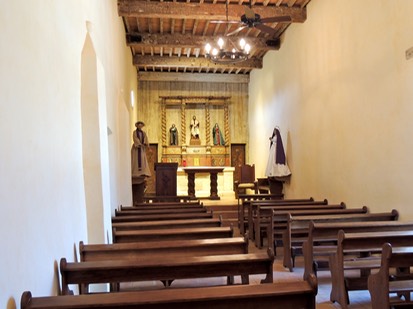
NOTHING LIKE THE PRESENT
Today, there is plenty of parking available thanks to the San Antonio Mission Reach Project, under the auspices of the San Antonio River Authority, that has provided a large paved parking area for hikers, joggers and bikers along the San Antonio River and also for the use of the Mission.
Like most of the missions, this one is built in a square with a large open space in the center. Park in the new parking area off Graf and Villamain Roads, and walk to the right when you reach the entrance. You will pass the Parrish Priest’ residence and then approach the church. You will be amazed at its small size; it only seats about 80 people. The altar came from San Fernando Cathedral in downtown San Antonio; it was refurbished and resized to fit this sanctuary. The chair beside the altar, known as the Bishop’s Chair, also came from San Fernando.
On the other side of the church is the Visitors Center. Here you can learn the history of the people, animals and plants of this area dating back to the 1700s. Just beyond the Visitors Center is the Yanaguana Trailhead. This comfortable 1/3 mile walking trail winds through trees and flowering bushes, over wooden walkways and along a narrow branch of the San Antonio River. Complete your tour of the Mission with a visit to the burial grounds and the remains of other buildings in the square.
LOOKING TO THE FUTURE
The future looks bright for San Juan and the surrounding area. The Mission Reach Project will bring a 15-mile hike and bike trail along the San Antonio River and almost up to the doorstep of this Mission. New rock walls and landscaping are well underway. There will also be input and takeout points for canoes and kayaks, attracting both residents and visitors to this area.
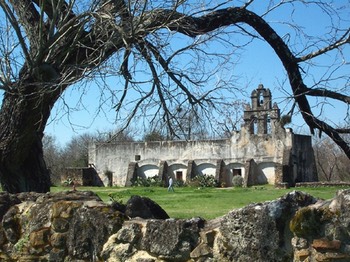
Later this year, the National Park Service will be creating a Spanish Colonial Demonstration Farm, with guides dressed in era appropriate clothing, raising crops and animals as they did in the 1700s. They will also show how the water from the San Antonio River was moved into the acequias and then into the farmlands.
In June 2012, it was announced that the San Antonio Franciscan Missions (the Alamo, San Jose, Conception, Espada, and San Juan) would begin the process of applying for the designation of World Heritage Site. This process is expected to take three years.
The re-birth of Mission San Juan was funded through private donations by communities in the San Antonio area. Father Garcia said, “It’s a tribute to the fact that people feel these are not just Catholic treasures, but community treasures.”
Back Then
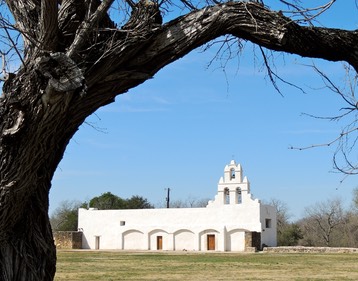
The beautiful Mission San Juan Capistrano reopened to the public in February 2013, after 18 months of renovations.
And Now